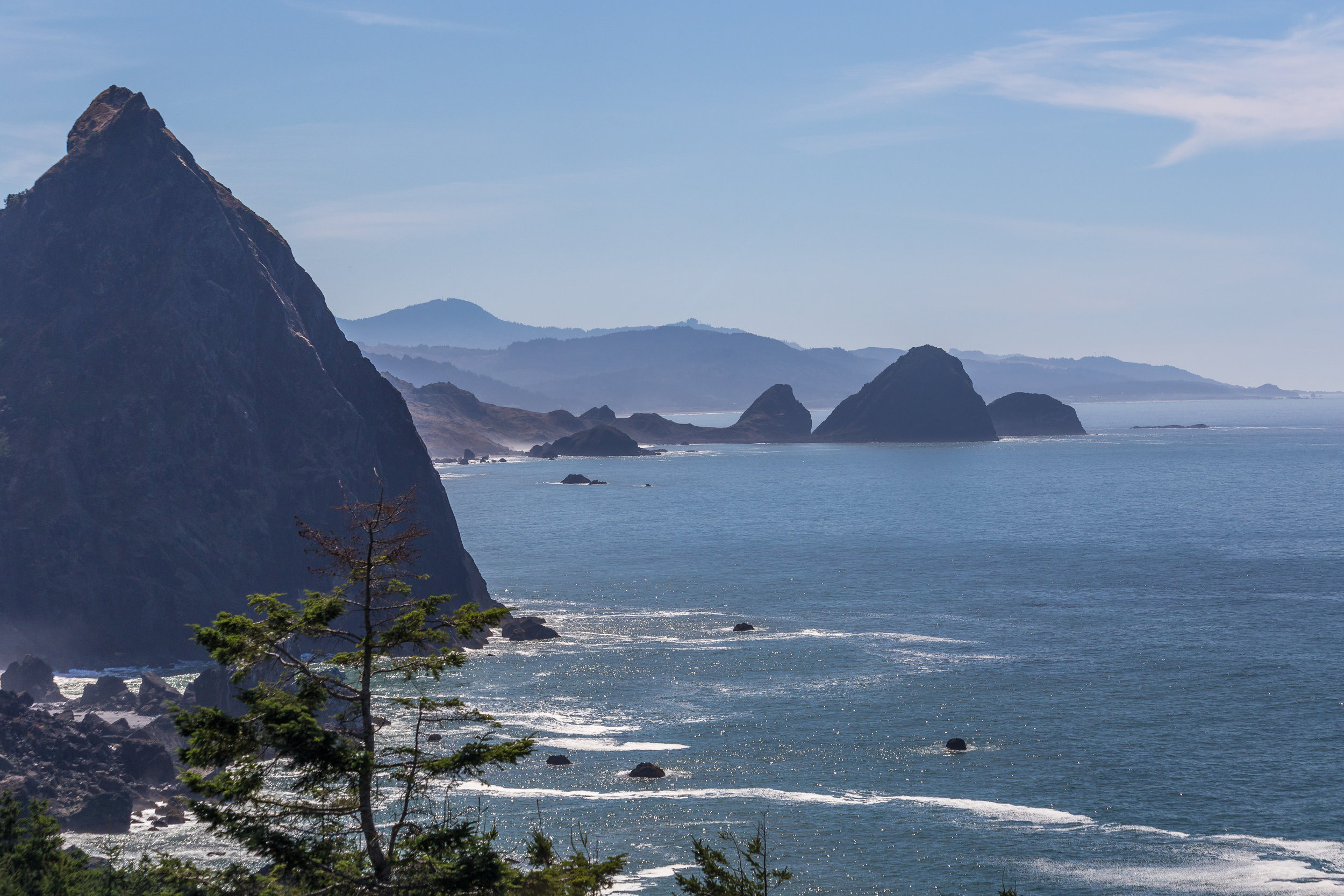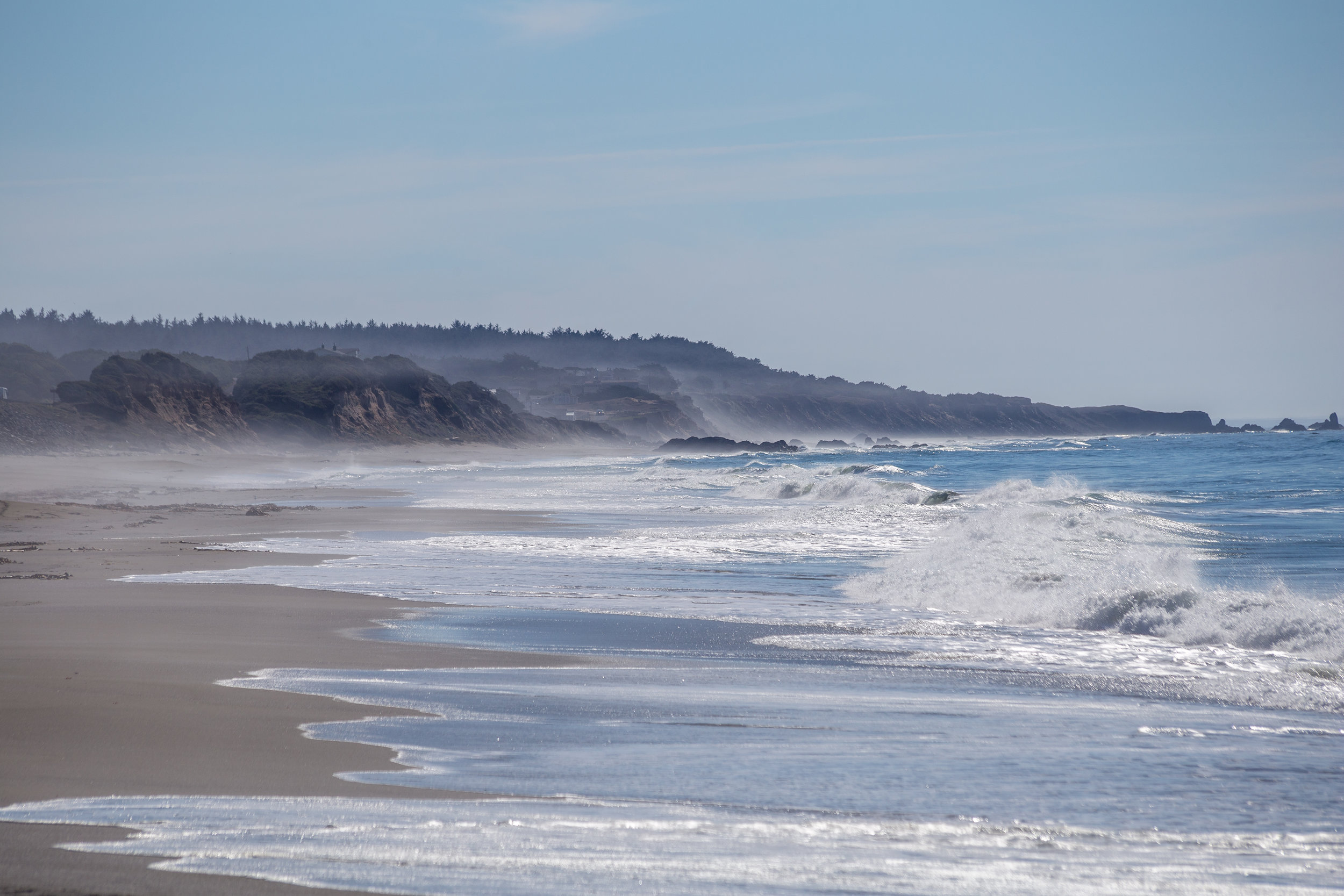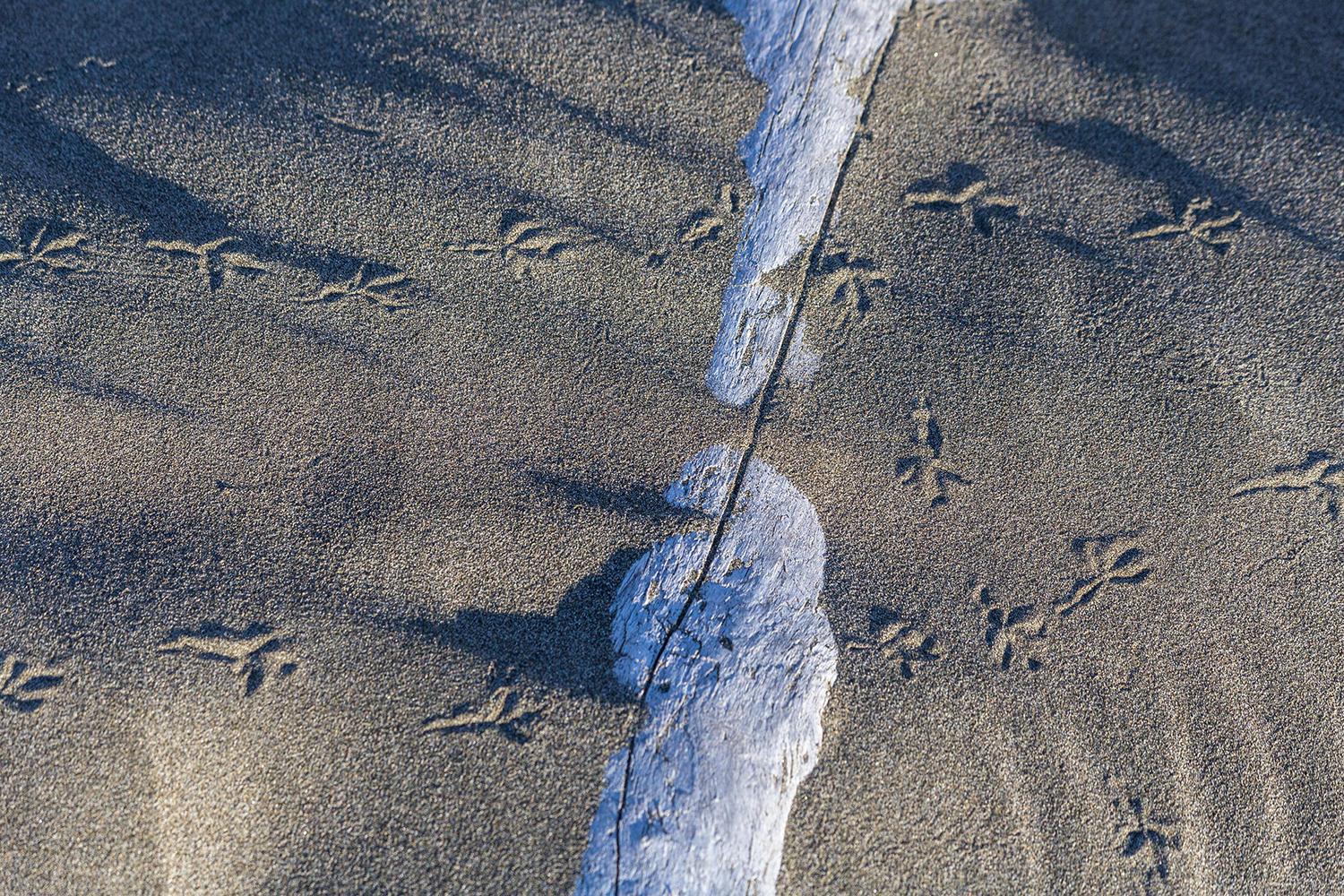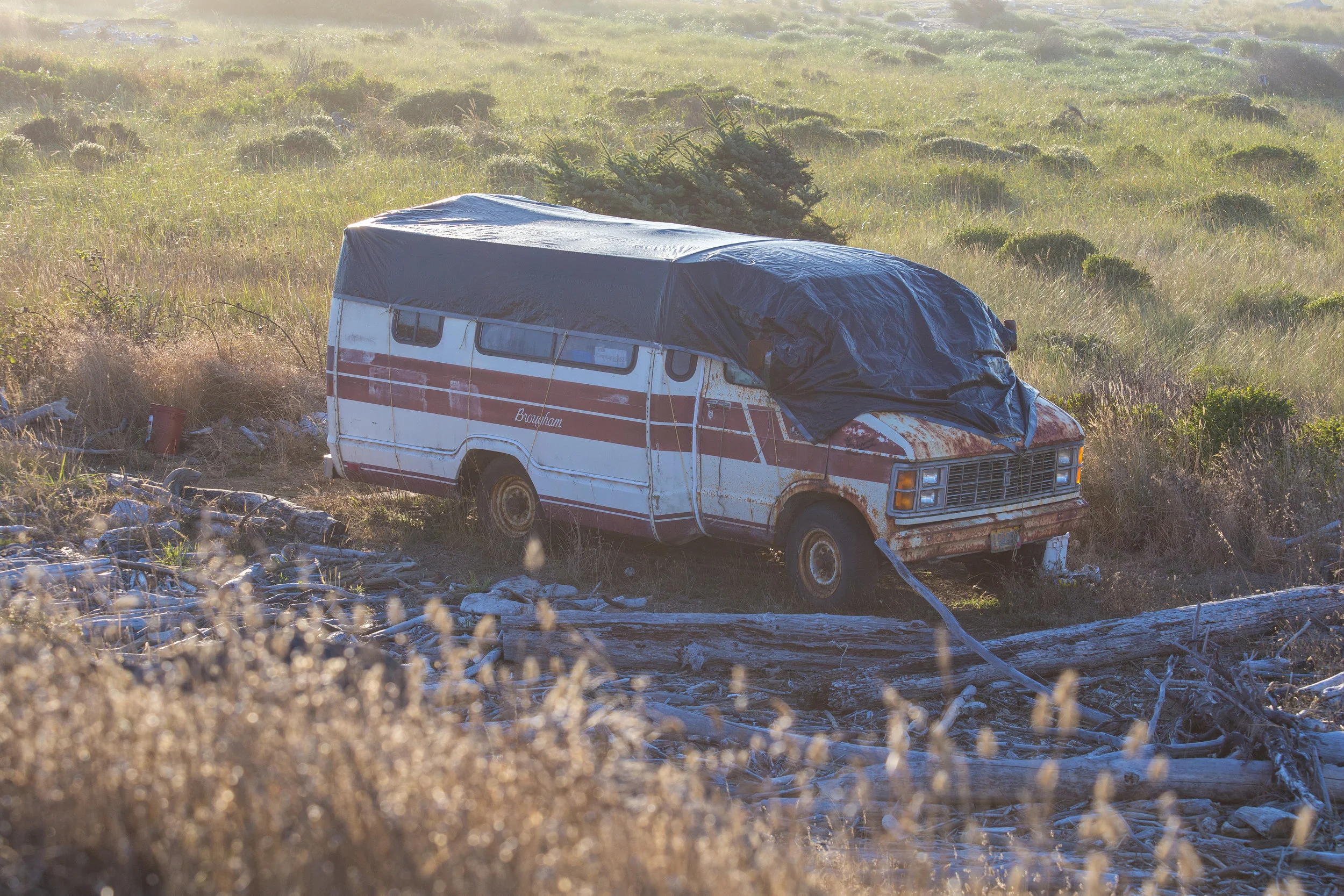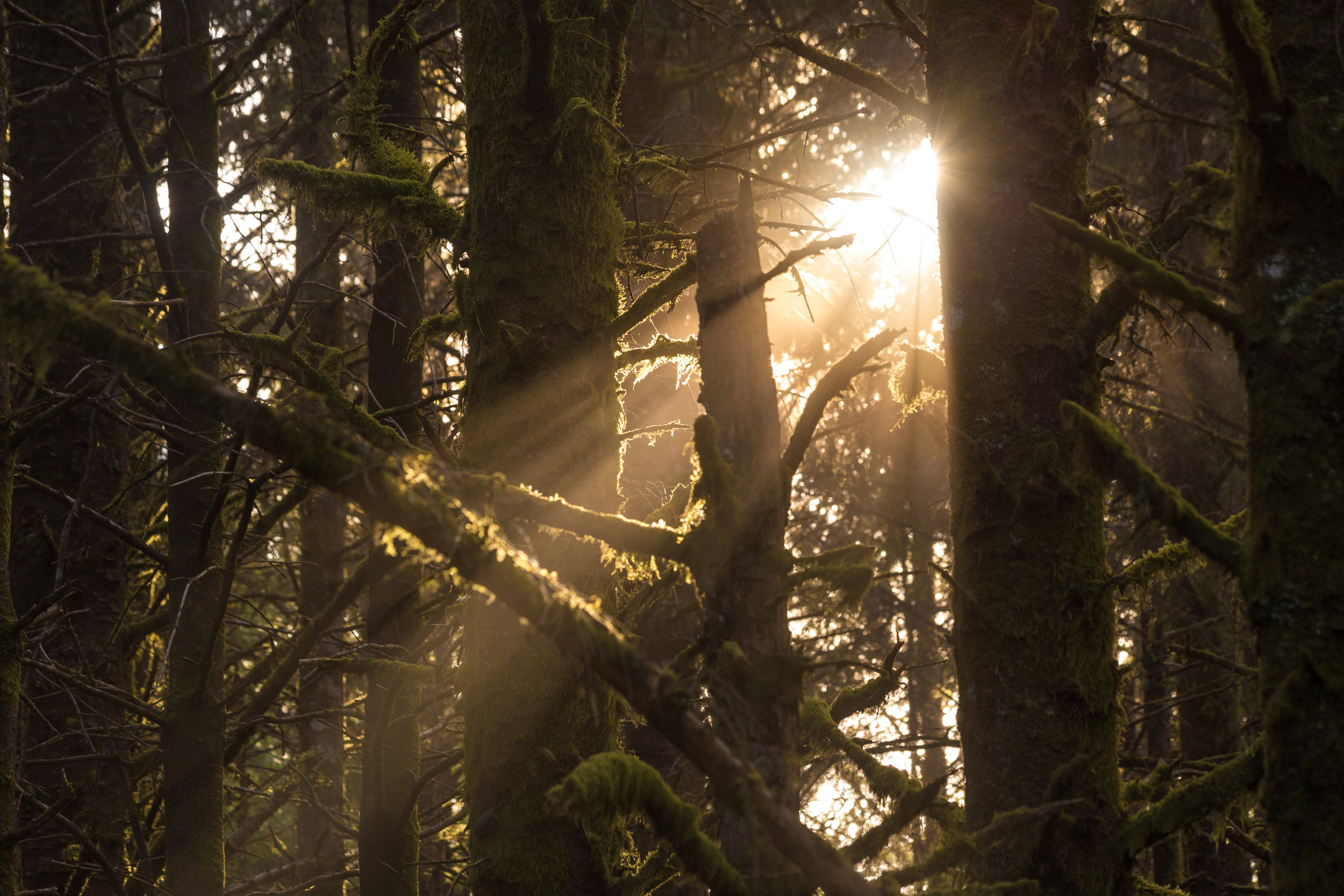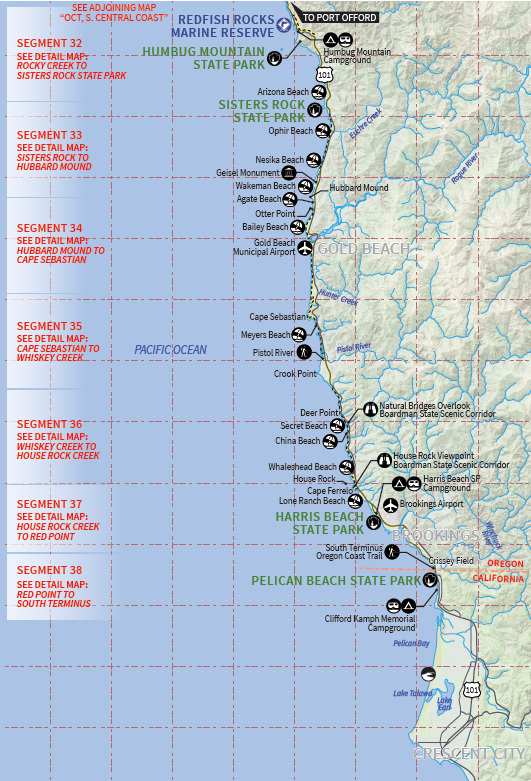Section 9:
Humbug Mountain to Pistol River
Basics
Distance
36.7 miles
Elevation Gain
3,122 ft
Trail Type
One-way/Shuttle
Permit Needed?
No
Photos
Guide
Authored by Patrick Mueller
Section 9 of the Oregon Coast Trail is nearly 37 miles long and stretches from Humbug Mountain State Park to Pistol River. Roughly 50% of this distance is along a road, mostly Highway 101, which makes this section more dangerous but less physically demanding than walking in sand. There are, however, some amazing sections of trail and beach that should not be missed.
Humbug Mountain State Park to Nesika Beach
The route begins by stepping back onto Highway 101 from Humbug Mountain State Park. Here the highway’s shoulder is very narrow if it is present at all, and this section should be trekked with absolute caution. The highway soon exits Humbug Mountain State Park and continues along the busy shoulder for 11 miles before arriving at the beach south of Euchre Creek. Along this 11-mile stretch you can expect some pleasant views of the coastline. Humbug Mountain is usually visible, and in front sits Sisters Rock State Park. This state park is named for the three large monoliths huddled together, two rising from the mainland and one from the ocean. By taking a short trail, backpackers can visit the beaches at this park and rest for a night. Just before Sisters Rock State Park is Prehistoric Gardens, a Jurassic-Park-themed roadside attraction where guests can walk through the lush Oregon coastal forest alongside dinosaur replicas. For those wary of walking 11 miles on the shoulder of Highway 101 and who don’t mind skipping the Prehistoric Gardens and a few great views, consider finding other transportation south.
There are often a plethora of birds in the lagoon to the south. Geese are most common, but keep your eyes peeled for osprey or great blue heron. Just after the lagoon, take the trail to the beach. Standing on the beach once again, you’ll see Humbug Mountain far in the distance, a reminder of how far you’ve come. Looking south, the beach stretches on for 3 miles into Nesika Beach. The beach is steep, creating larger waves that crash with the peaceful sound all too familiar to OCT hikers by now. Multiple access points allow families to trickle onto the beach and enjoy the summer sun and the cool mist blown from offshore. Highway 101 disappears 3 miles in, and a somewhat hidden OCT blue arrow sits below the neon yellow “171” emergency sign. Use this access point to walk onto Nesika Beach Road. The road travels mostly straight through the town of Nesika Beach, where you’ll see nearly half of the town by walking 1.5 miles. After all, the population of Nesika Beach is only around 460.
Geisel Monument State Heritage Site to the Pistol River
Just before reaching Highway 101 on Nesika Beach Road, an OCT trail marker points you south onto a forested path to Geisel Monument State Heritage Site. Buried here are John Geisel and his three sons, who were killed on February 22, 1856, during the Rogue River Indian Wars. This small 4-acre plot also has multiple shaded picnic tables, so it is a perfect location for lunch. Just outside of Geisel Monument you'll follow another short stretch along Highway 101 until you reach Old Coast Road across the highway. Follow it for 2 miles and then cross the highway again to the access point for Otter Point State Recreation Site. Follow the road into the parking area for Otter Point and start on the trail to the beach. Immediately the trail splits; follow the blue OCT sign left to the beach or take a quick detour out onto Otter Point.
A viewpoint of the beach presents itself after a few hundred yards along with a homemade bench and a view of the beach below. You’ll find that the beach here is wide and has a very shallow slope at first; however, within half a mile the beach narrows and houses appear along the hillside. Along the way to Gold Beach there is a large field of driftwood debris. Among the logs there are typically several huts waiting to be explored. After admiring the engineering of the builders, continue for another 1.5 miles to the north jetty at Gold Beach. Follow the roads around the Rogue River, past fancy hotels, and across Isaac Lee Patterson Bridge. On the south side of the Rogue River you’ll pass a sunken ship, Jerry’s Rogue Jets, a large gift shop, restaurants, an airport, and the Gold Beach Harbor. Within no time you’ll step foot on the beach below the south jetty. More driftwood, sea stacks, and small grassy dunes line the beach until Cape Sebastian.
An old road running up the hillside and into the forest is easily seen less than a mile before the beach ends. The OCT sign can be found with a little searching, confirming the route into Cape Sebastian State Scenic Corridor. Here the forest is lush and filled with life. Watch for banana slugs on the trail and mushrooms alongside it. A few patches of aspen trees provide a pleasant break from the usual coniferous forest. After the trail rises steeply, it levels out and then descends again toward Myers Creek Beach.
The next 3 miles of beach is known as Myers Creek Beach and Pistol River Beach, named for the two streams that enter the ocean here. Massive sea stacks rise out of the ocean at the more northern Myers Creek Beach and slowly give way to beautiful windblown sand dunes at Pistol River Beach. During the summer months the Pistol River becomes a large lagoon and refuge for birds. Continue on the beach, and after passing Pistol River you’ll begin the final section of the Oregon Coast Trail, Section 10.
To continue exploring Oregon Coast Trail by section, check out these online guides:
Oregon Coast Trail Section 1: Fort Stevens State Park to Oswald West State Park
Oregon Coast Trail Section 2: Oswald West State Park to Tillamook River Bridge
Oregon Coast Trail Section 3: Tillamook River Bridge to Bob Straub State Park/Pacific City
Oregon Coast Trail Section 4: Bob Straub State Park/Pacific City to Otter Rock
Oregon Coast Trail Section 8: Bandon to Humbug Mountain State Park
Maps
Tips for hiking the Oregon Coast Trail
The Oregon Coast Trail offers hikers an opportunity to experience the beauty of Oregon’s coastal landscapes and ecosystems in an intimate and continuous way, and it passes through fragile environments. Your awareness of a few additional items can enrich your overall experience on the OCT and help minimize your impact on delicate environments along the way.
Before departing on your hike, learn the Leave No Trace Seven Principles so that you can practice them while you are out on the trail. The more that people incorporate Leave No Trace into their decisions and habits, the better the outdoor experience will be for everyone.
Learn about Oregon’s five unique marine reserves. Marine reserves are areas that have been set aside for study, research, and conservation; it is illegal to remove any marine life from a marine reserve, and they are also protected from any development. Marine protected areas, which are often adjacent to reserves, allow some fishing and development. Marine reserves are wonderful areas to observe wildlife and take in Oregon’s beautiful coastal scenery. Fortunately, Oregon’s marine reserves couldn’t be more accessible than when hiking the OCT. From north to south they include:
The islands and sea stacks along the coast are protected as part of Oregon Islands National Wildlife Refuge. They provide crucial nesting habitat for seabirds and pupping/resting sites for seals and sea lions. All seabirds and marine mammals are protected by federal law and are sensitive to human disturbance. For this reason, all islands and sea stacks are closed to public access year round.
Portions of the trail meet the ocean's waterline and may only be passable at low tide. Excercise caution and safe judgement; wait for appropriate tidal conditions in these areas, and always watch for sneaker waves.
Pay special attention to areas signed and posted as snowy plover habitat. A handful of Oregon’s beaches and estuaries provides critical habitat for the western snowy plover, a species that the U.S. Fish and Wildlife Service listed as threatened in 1993. The breeding season for the western snowy plover is from March 15 to September 15, and during this time it is imperative to avoid potential nesting locations in dry sand beach areas. Dogs, kites, bikes, and vehicles are all prohibited from March 15 to September 15, and walking is only allowed on hard-packed wet sand. Please do your part to help this threatened species survive by complying with posted restrictions and completely avoiding closed areas. There are designated snowy plover areas from Fort Stevens to Floras Lake, and hikers should be aware of their locations. To learn more, be sure to check out these snowy plover resources:
The Oregon coast is generally a very dog friendly location, and dogs are allowed on most beaches, state parks (when on a leash) and other coastal public lands. However, there are specific times and locations when dogs are not permitted in certain areas, such as beaches and estuaries identified as snowy plover habitat during nesting season. Please pay attention to posted signage and respect times and areas where dogs are prohibited.
For those interested in hiking the OCT in sections, or even just accessing the trail for day hikes, take note that recreation fees and passes are required at several federal recreation sites. If you will be parking at one of the state or federal fee area recreation sites, make sure to pick up the applicable recreation pass such as an Oregon Coast Pacific Passport.
Risks of hiking road sections
Although officially designated as a trail over 40 years ago, the OCT is an ongoing project and not yet a single continuous hiking trail. Gaps in the trail, usually caused by rivers, bays, or rocky headlands, require hikers to walk along busy roads (often U.S. Highway 101) that are not designed for pedestrian use. Oregon Parks and Recreation Department and other public and nonprofit agencies, including local cities and counties along the Oregon coast, are working to eliminate these breaks by establishing trails to connect trail segments and beaches.
In 2016, the Oregon legislature enacted legislation requiring OPRD to complete an action plan that will identify steps needed to complete the trail. This planning effort will identify key stakeholders and document the current status of trail completion, evaluate and assess alternatives for completing trail segments, and seek funding to complete new trail sections.
Until the trail is completed, OCT hikers will have to decide whether they choose to walk along the shoulder of the highway that is, in fact, currently an official part of the trail. It is important for OCT hikers to understand the risks of walking along the highway portions of the OCT. The most prevalent dangers are being hit by a vehicle or being struck by debris kicked up by or flying out of a passing vehicle. In addition, some highway sections along the Oregon Coast Trail are longer and more difficult than others. These highway sections are detailed in each section's guide.
Public safety is of the highest concern for the Oregon Coast Trail Foundation, and we do not advise walking along roads without a designated pedestrian path. We support utilizing other modes of transportation to connect the trail and beach sections such as public transportation, private shuttle or taxi, biking, ferry, or completing the Oregon Coast Trail in hiking sections to avoid the highway altogether. Two great resources for finding alternative transportation are Google Transit (Google.com/transit), Visit The Oregon Coast (visittheoregoncoast.com/transportation/), and an internet search for taxis or other transportation alternatives in the town nearest to the trail break. There are also ferry services available to cross the Nehalem River, Tillamook Bay and the Umpqua River, and these will greatly reduce the amount of highway miles one must walk. Note that ferry boats do run on a regular schedule and must be reserved in advance. More information on each of these ferries is found in Section 2 and Section 6.
This guide provides information needed for hikers who do choose to walk the trail in its entirety, including those portions along the highway. We urge those hikers to exercise caution to ensure a safe and enjoyable hike on the OCT.



